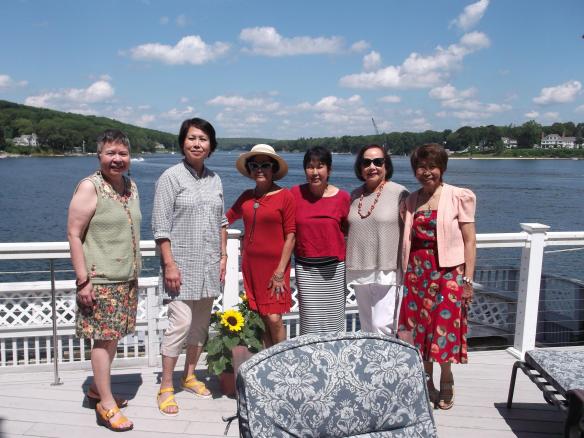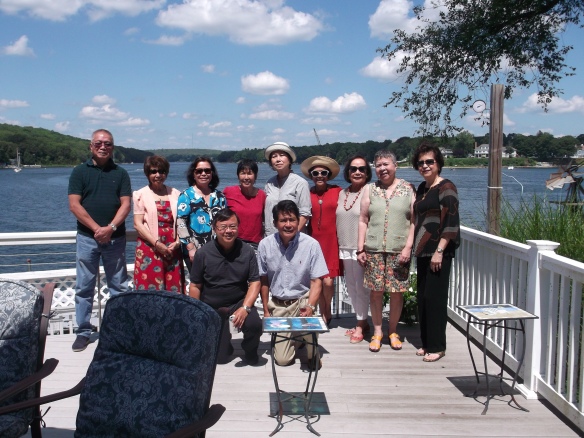
 January 1, 2018: USTMD70 e-mag
January 1, 2018: USTMD70 e-mag
Fr. Leon Inchausti, one of the SEVEN Martyrs of Motril
Blessed Leon was born in Mendita-Beaskoa, Caserio de Ajanguiz (Vizcaya) on June 27, 1859 in a family of patriarchal court closely related to the church. His father, Benito, had the fame of sanctity. Even ten years after his death, people in the town still remembered him as ‘the saint of Beaskoa’. His brother, Ceferino, was a sacristan of the parish from 1900 until his death in 1925. He was succeeded by his son who had the same name and was likewise the organist until his death until 1977 when he died. A son of his younger sister, Casta, also embraced religious life.
After studying the basic of latin in Guernica, he entered the Recollects novitiate in Monteagudo at the age of 19. On November 11, 1879, he made his first religious profession before Fr. Patricio Adell, one of those who would restore the Recollect foundations in America. During the first stages of religioius life, two experienced and expert directors guided him. Fr. Miguel Ugarte was his novice master from November 1878 to April 1879, and Fr Ramon Maranon took over. Then he continued his ecclesiastical studies in the colleges of Monteagudo, Marcilla and San Millan de la Cogolla, where he professed the solemn vows on November 12, 1882.
Filipinas
He arrived in Manila on July 1, 1884 together with thirteen religious. In order to learn the Visayan dialect, he was assigned immediately to the Parish of Compostela in the island of Cebu. On December 22 of the same year, he was ordained priest and started exercising his priestly ministry. His first years, 1885 to 1892, were full of frequent transfers to different parishes. It seems that the Superiors counted on him to substitute or cover up temporary loopholes.
His first assignment was in the parish of Carmen (Bohol) where, where he was an assistant curate from march to June 1885. Afterward, he was transferred to the parishes of Loay, Dimiao, Sierra Bullones and Ubay, all belonging to the island of Bohol, and in Banton, Azagra and Romblon (1891-1892) in the island of Romblon. In all these assignments, he acted as assistant curate. In 1892, he was named parish priest of Banton. He stayed in this isolated islet at the center of the Philippines until 1897 when he was transferred to the convent in Manila.
Unfortunately, there is not so much written account left of his pastoral labor. It is easy to imagine that he would continue following the directives of the Libro de Administrar of the Order and observing the Filipino customs. Therefore, he would combine his duties that were strictly pastoral with other functions of social and political character which were part of the responsibility of Filipino parish priests during the Spanish regimes. What can be rightly confirmed was that he was a lover of music and in Damiao, he organized a choral group composed of children whom he started teaching solfeo.
While in Manila, he had to live the anguish of the American interruptions and later on of the American occupation, as he was obliged to share his life with the soldiers who were occupying most of the convent. On October 11, 1898, the superiors acquired for him a ticket to Spain and he immediately left the peninsula. In Spain, he visited his family and, although it has already been delayed for 13 years, he celebrated the solemn Thanksgiving Mass which was a tradition for all priests. During the ceremony, his mother, quite fragile in her health collapsed because of excitement. Neither was his father feeling well, but he would live for almost ten years more.
Fr. Leon was already a man tired and advanced in age. The tropical heat and the ministerial fatigues in vast and inhospitable parishes had damaged his organism at the age of 61. The Superiors agreed to leave him in Spain, at the residences in the southern part where the pleasant weather and the kind character of the people facilitate the insertion of the ‘american’ friars. For some months, he resided in Granada, in Hospitalicos which was by then the most active residence. But in November 1921, he left for Motril where he would stay until his death, except for ten months in 1928 when he stayed in the new house in Bilbao. In that occasion, he was again permitted to visit his brothers and his nephews. His parents were already dead.
As it could be observed, Fr. Leon was a simple religious, dedicated to a silent exercise of his ministry. He left this world hardly leaving behind any footprint. Only one letter surpassed the tests of time. Through the witnesses who testified during the process of his beatification, it is certain that in Motril, he enjoyed a good fame, as all his companions.
From the “Curia Generalizia degli Agostiniani Recolleti” Rome, Italy
Busts of the Martyrs of Motril are located in San Sebastian College, Manila,Philippines
 Mini, Letty M, Luz D, Evelyn V, Marietta G, Marietta’s hubby, Doming
Mini, Letty M, Luz D, Evelyn V, Marietta G, Marietta’s hubby, Doming
 RP’s Asian Breast Center and Manny. Beautiful!
RP’s Asian Breast Center and Manny. Beautiful!
 Latest state-of-the art Asian Breast Cancer in RP of our sensational classmate Norman San Agustin. From left: ,Ato, Dr. Norman. Linda, Manny. Norman runs the Asian Breast Center.
Latest state-of-the art Asian Breast Cancer in RP of our sensational classmate Norman San Agustin. From left: ,Ato, Dr. Norman. Linda, Manny. Norman runs the Asian Breast Center.
Luzbella’s Connecticut Summer House below
L-R: Mini, Marietta, Luz, Evelyn V, Luz D, Letty M with Niantic Bay behind.





 Charles and his Camaro (see above)
Charles and his Camaro (see above)  Photos by Charles Dunifer
Photos by Charles Dunifer
Christmas 2017
Dear family and friends,
Once again, we reach out to you with our Christmas newsletter.
We did not use medieval monks to write it for us this time. Otherwise,
it would take centuries to reach you. (Smile) Hopefully, this
newsletter reaches you in time for the holidays.
Mini is now on her 41st year at work. Eventually, Art
(arthritis) may catch up with her and she may eventually throw in
the towel.
Sylvia works with an Alarm Company in a neighboring town as
one of their accountants. She is lucky to drive just
3 miles to work.
Alfred is now in graduate school in electrical engineering.
With lots of library work, he hardly sees us now. He knows
the library staff more than us.
Eric takes care of our real estate. A parking lot/park
was built by the town in front of the building. Still waiting
for Bank of America to rent one unit. (Just dreamin’)
No cruises for us this year. No more losing the shirt off our back,
no sunburn, no weight gain of ~ 10 lbs or, worse, no coming down
This Xmas, Mini prepared an easy-to-do recipe that she saw at the
EWTN TV show, Food For the Soul.
Super – Easy Potato Salad
Peel the potatoes, boil, then let it cool down.
You may cut them into quarters if the potatoes are big.
Then cut these vegetables into bite sizes.
Beets, one can
Celery
Carrots
Onions
3 hard boiled eggs
Mix in 1 tsp – 1tbsp relish.
Mix with mayonnaise. Refrigerate. Enjoy!
Just go easy with the salad.
May your days be merry and bright!
And may all your Christmases be white!
Mini
From Joey’s memoirs:

IN SEARCH OF MY ROOTS by Mini
Never in my life did I think that I would trace my ancestors over several generations. Never in my life did I imagine that I would have fun writing about them. The search for my roots begins in Banton, one of seven islands in the province of Romblon. Romblon is located right in the center of the Philippines. My mother, Patria Yap Perez, came to this world on January 12 in Banton. It was 1928. The United States was at the height of its prosperity. However, the following year, the stock market crashed and ushered in the Great Depression. You would not know it in Banton, one of about 7000 islands in the Philippine Archipelago which was acquired by the the United States after the Spanish-American war. The Great Depression did not affect the Bantoanons. Modern civilization seemed a thousand miles away in this tiny island. The Bantoanons lived in a world of their own. They received news of the outside world from vacationing relatives and friends several weeks or months after the events happened.
It is so isolated, so remote that, in the old days, anyone who got seriously ill had no choice but to pray and pray and pray — not to recover but to plead that the welcome at the gates of Kingdom Come by St. Peter would not be unfavorable.
The Rocky Island
The name Banton means rock from the Visayan word ´bato.´ Banton is an island of rock. Sharp rocks dot the island. Banton’s boulders are so numerous and huge, and its terrain so rugged that there is hardly any flat land. It is hilly with few arable fields.The island was so poor then that famine, especially during the months-long rainy typhoon season when fishing was impossible, was not uncommon, and it is so small that one can walk around it in a few stumbling hours. Since there is very little flat land, people are forced to live in steep hillsides. Good farmland is also scarce. Hills, which are not good for farming, cover most of the land. Forest grow all over the island like moss covering stone. Banton was dependent on nearby Mindoro for rice, its staple food.
Life was harsh in Banton and people would work tirelessly to farm its little precious soil. From this harder way of life came a kinder and more tolerant attitude. Many of Romblon’s professionals come from Banton. Unfortunately, the unpromising future in Banton drove these professionals to leave and seek greener pastures elsewhere.
Patring, as my mother was affectionately called, grew up, under beautiful rural circumstances, in a quiet farming and fishing community in Banton. The wives grew vegetables in their small garden plots while their husbands either went deep sea fishing or
raised crops. It was that kind of village where you worked hard from dawn to dusk even if, at the end of the day, you could only bring home a few fishes and some vegetables for dinner. Patring spent the first ten years of her life in Banton before she and her family moved to nearby Simara island where land was cheap. Her father Alfredo Perez had taken the job of municipal treasurer of Corcuera, Simara and built the biggest house in the island. Despite the move, the hard-working habit of the Bantoanons left a lasting impact on my mother.
An island girl, she cultivated a strong work ethic and had big dreams. Throughout her life, she firmly believed that hard work and perseverance brought success.
Growing up with few material comforts, she believed that personal success meant success in economic terms. I was brought up to believe in hard work, perseverance and taking advantage of every good opportunity that came my way. A strikingly beautiful woman, my mother was tall and slender with milky-white complexion and jet black hair. At the age of 15, my mom won the provincial Miss Commonwealth of Romblon beauty contest and Uncle Eking (Enrique Fallarme) was her prince consort.
A Bataan Death March Survivor, My father (Napoleon Famadico Festin) was different. He was the product of an upper-class upbringing and Manila schools. To him, a better indicator of personal success was the contentment with which we viewed our lives. The story of my father also began in Banton. He could trace his roots to barrio Sibay in the island. Almost all of Sibay’s population is a Festin or originated from a Festin. I still have many Festin relatives living there. Many Festin’s became priests and nuns. In the 1990s, Cardinal Sin honored the Festin clan for raising many priests and nuns. A Festin uncle (Augusto) donated land to establish a major seminary in Odiongan, Tablas, another Romblon island. My family donated a church to the Archdiocese of Romblon while the clan gave land and money for a Gawad Kalinga village in Tablas. My dad signed up voluntarily to be a soldier in WWII. While hiding behind a tree, a bullet almost grazed his cheek but he survived the war unscathed. Otherwise, I won’t be here.
The Colonial Life under Spain
By order of Governor General Narciso Calveria y Zaldua, the Spanish friars started baptizing the natives of Romblon on November 21, 1849, choosing their surnames from the “Catalogo de Apellidos.” Thus, everyone in Banton had a last name that began with the letter F – Fabella, Fadriquela, Fabicon, Fadrilan, Falqueza, Fajutrao, etc. (It´s a good thing we did not get a curse word from the catalog). In Spanish, ´festin´ means a small festival. Three-hundred fifty years of Spanish rule gave us our names, our religion, and influenced our music, cuisine and language. The melodious Romblon dialect, like Spanish, is a phonetic language. It is pronounced as it is written. The Spanish catalog was also
used in the neighboring island of Sibuyan, where names begin with ´R´, and the main Romblon island, where names begin with ´M.´
Elderly folks in Romblon still remember the legend of Ulo Aweng, my great-great grandfather. Here is how the legend goes.
The Legend of Ulo Aweng, the Jono of Barangay Sibay
Early in the 19th century, Ulo Aweng, the village philosopher, was one of those unfortunate islanders who was believed to have been taken as a slave by the Muslims. He served his masters well. Aweng certainly gained his masters’ trust and confidence for he became a constant fishing companion of the Muslims. Aweng later was allowed to fish alone. These solo fishing expeditions gave Aweng the opportunity to escape.
One night, Aweng packed his clothes into a sling and sailed his masters’ outriggger boat into the darkness of the night. He reached an island, but, much to his dismay, he found
out that it was still Muslim land. Aweng did not panic. Out of the blue sea, a big fish appeared. Aweng yelled, ´If you were sent by God, come to the shores and take me home.” Somehow, the fish edged to the side of Aweng and off they swam to another island. The Spanish authorities believed Aweng’s fish story and he was brought back by boat to Banton island. Ulo Aweng was baptized and given the name Manuel
Festin.
A Modern Snow White by Mini
She’s washing her face in sea water
Building her armour, brittle and white
Bruises for rouge, blood for her lips
Exhaustion shadows her eyes and,
Narcotics for nightshade.
And when she steps outside
They call her beautiful.
L – R standing: Doming, Letty, Alice, Evelyn, Marietta, Luz, Luz D, Mini, Christy Kneeling: Ando and JoBum.


